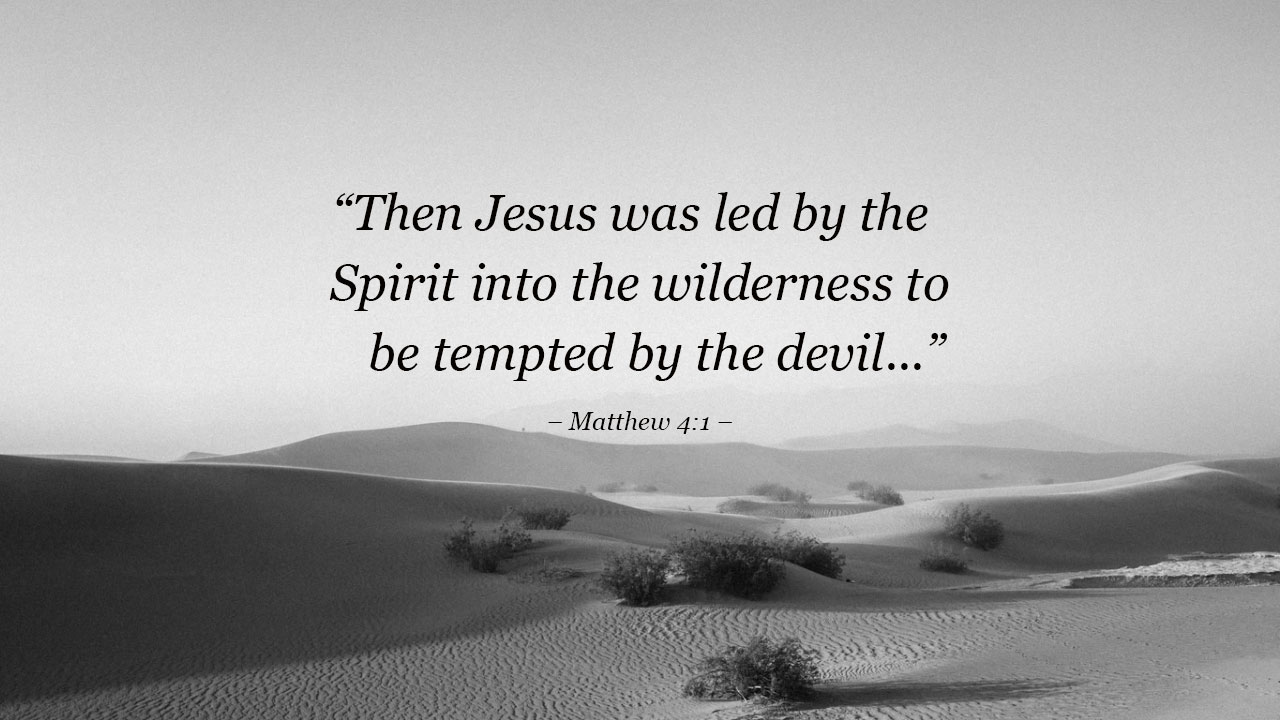
“Come, beloved, and rest your mind; Leave the things of this world behind. Here I will be your daily bread, all that you need.”
From
“Into the Desert” words and music Curtis Stephan
Today’s Liturgical note
comments on the liturgy, readings and music in the order in which they occur on
this First Sunday in Lent.
Prelude:
Into the Desert
Not In hymnal
This song guides us
towards the focal point of the First Sunday in Lent. Jesus is led into
the desert to be tempted by the devil.
The first line (found at the top of the page) speaks to the first
temptation - bread. It also makes a subtle reference to Jesus as God’s
“beloved” as found in next week’s gospel.
Chanted entrance
antiphon and instrumental procession
The entrance antiphon
(introit) is part of the Introductory Rite. We chant it at St. Mary’s
during lent to highlight the solemn nature of the season. Today’s
antiphon is taken from psalm 91, the source of both the devil’s temptation and
Jesus’ words of resistance. The instrumental procession creates space for
personal reflection as the server carries the cross - the symbol of Christ’s
sacrifice and ultimate victory over sin and death.
Sung Kyrie
One of the earliest
prayers of the church translated from the Greek as “Lord have mercy.” We
sing the Kyrie during lent to highlight the penitential nature of the season.
Scripture readings
The compilers of the
lectionary pair the Genesis story where Adam and Eve are tempted by the serpent
with Matthew’s gospel where Jesus is tempted by the devil. In the second
reading, Paul explains the relationship between the two stories.
Brothers and sisters:
Through one man sin entered the world,
and through sin, death,
and thus death came to all men, inasmuch as all sinned—
Romans
5:12
In psalm 51 we sing the
psalmists plea for God’s mercy.
Chanted Prayer of the
Faithful
The response; Lord have
mercy and the music setting reflect the solemn nature of the season.
Offertory Gracious God #118
The refrain to this song
describes God’s abundant mercy.
Mass of Christ the
Savior #912, 915, 916, 917
We sing this setting for
both lent (where the Gloria is it omitted by liturgical rule) and the Easter
season. The Lenten Memorial acclamation speaks of Christ’s cross and
resurrection as the way to salvation.
Communion On Eagles Wings #436
A modern-day anthem
based on psalm 91 and so connected to today’s gospel. It was written by
Fr. Michael Joncas as a prayer for strength during the difficult times of
life’s journey.
Recessional Forty Days and Forty Nights #127
An important part of our
musical and Lenten tradition and a reminder that Lent is greater than any one
or even the sum of it’s parts. I hope you will stay and pray the entire
song.
Blessed to walk this Lenten
journey once again with you at St. Mary’s,
Bruce.
